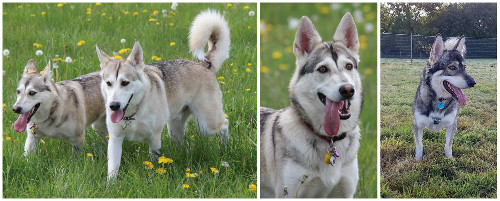
Oculoskeletal Dysplasia is a disease characterised by skeletal deformity and ocular abnormalities. Until recently only two strains genetic mutation had been reported in the Labrador Retriever and the Samoyed, however, after extensive genetic research undertaken by the Animal Health Trust, the OSD3 mutation has been discovered in the Northern Inuit Dog.
As of September 2017 there have been three known, documented litters of Northern Inuits containing puppies affected with Oculoskeletal Dysplasia. Signs of abnormality can be detected from early puppyhood. Affected puppies are noted to have significant shortening of the limbs when compared to their unaffected littermates and show dyplastic bone growth as they age, resulting in the legs and paws to bow outwards. Affected puppies also go on to develop eye problems resulting in cataracts and blindness and often appear to have abnormally large and protruding eyes from a young age.
Skeletal deformities include luxation/subluxation of the joints (hips, elbows, wrists) causing abnormal angulation of limbs.
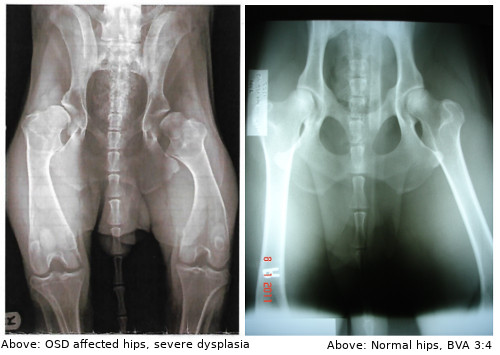
Ocular abnormalities include cataracts, retinal detachment, visible hyaloid atery remnants, hyper-pigmentation and luxation of the lens. Gonioscopies on affected puppies have shown signs of Goniodysgenesis in some cases. These abnormalities are known to deteriorate over time and in some cases can cause total blindness and require enucleation (removal of one or both eyes).
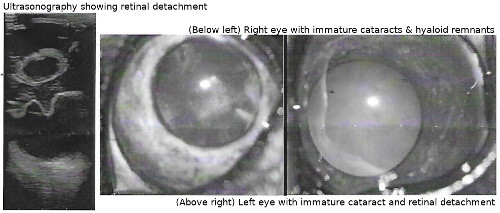
Research has shown that Oculoskeletal Dysplasia is an autosomal recessive mutation. To be affected by OSD, a dog must inherit one copy of the mutated gene from each parent, therefore holding two copies of the mutated gene. The OSD mutation is fully penetrant, so a dog with two copies of the mutated gene will show clinical signs of Oculoskeletal Dysplasia, however, dogs with only one copy of the mutated gene (carriers) will show no clinical signs.
Estimates arising from the study undertaken by the Animal Health Trust suggest that 15% of Northern Inuits are carriers of Oculoskeletal Dysplasia, and that 0.6% of Northern Inuits carry two copies of the mutated gene and are affected with Oculoskeletal Dysplasia. These figures are based on results from those dogs submitted to the AHT for the purpose of the study and as many dogs were related to the affected dogs the figures may not represent the true statistics within the breed.
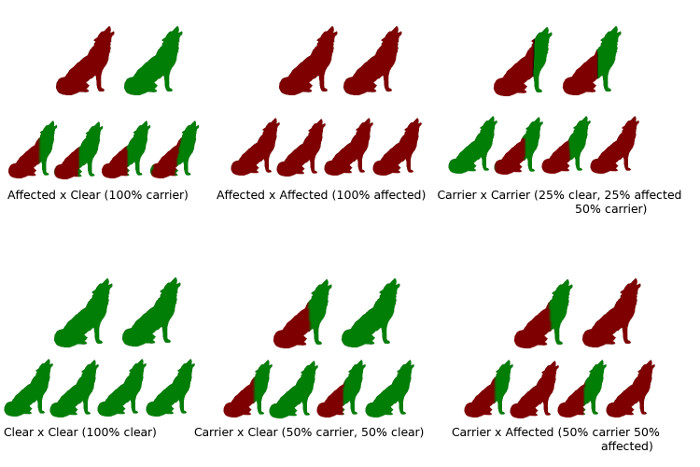
Definitely not! The Animal Health Trust’s research suggests that the Oculoskeletal Dysplasia mutation arose very early in the development of the breed as is not limited to one line. Multiple lines have tested positive for carriers of the OSD3 mutation and whilst one kennel has been unfortunate to produce most of the affected puppies to date, this mutation is not confined to one line of dogs.
Due to the fact that the Oculoskeletal Dysplasia mutation is believed to have arisen early in the development of the Northern Inuit, it may also be present in other Wolfalike breeds whose heritage contains Northern Inuit. It is advisable that any dog with Northern Inuit heritage be tested for the OSD3 mutation before breeding. Guidance from the Animal Health Trust with regards to the presence of the OSD3 mutation in other Wolfalike breeds may change when more dogs have been tested.
Although it is easy to see the clinical signs in affected dogs, carriers show no clinical symptoms and cannot be detected in any other way than through testing.
A DNA test is available from the Cambridge Canine Genetics Centre (whose staff were formerly part of the AHT, who originally found the OSD3 mutation) in the form of a buccal swab kit which will be sent to you in the post. Puppies can be tested once they are weaned (4 weeks+). Once you send your samples back to the CCGT you should receive your results within 2 weeks.
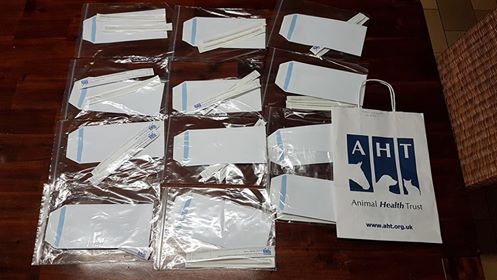
If your dog is tested clear then the second parent need not be tested. If your dog is tested as a carrier then you MUST ensure that the second parent is tested clear, otherwise you run the risk of producing affected puppies. A carrier should NEVER be mated to another carrier, however, carriers need not be removed from the gene pool for a number of generations (because the genetic diversity in the Wolfalike breeds is so small it would be deleterious to the breeds to remove carriers from the breeding pool).
If you are looking to add a Northern Inuit to your family please be aware that at present many breed societies are not making this test compulsory for their dogs! When approaching breeders make sure you ask whether the parents have been tested for OSD3 - a good breeder will be happy to show you certificates!
If the parents are untested and you still wish to purchase a puppy it would be advisable to insist that the breeder test the puppies for the OSD3 mutation before placing a deposit.
Information contained within this page was accumulated from data given by the AHT at their Northern Inuit Health Day, taken from their website, datasheets and presentation. If you wish to find out more about Oculoskeletal Dysplasia or the work undertaken by the Animal Health Trust please check out their website.
